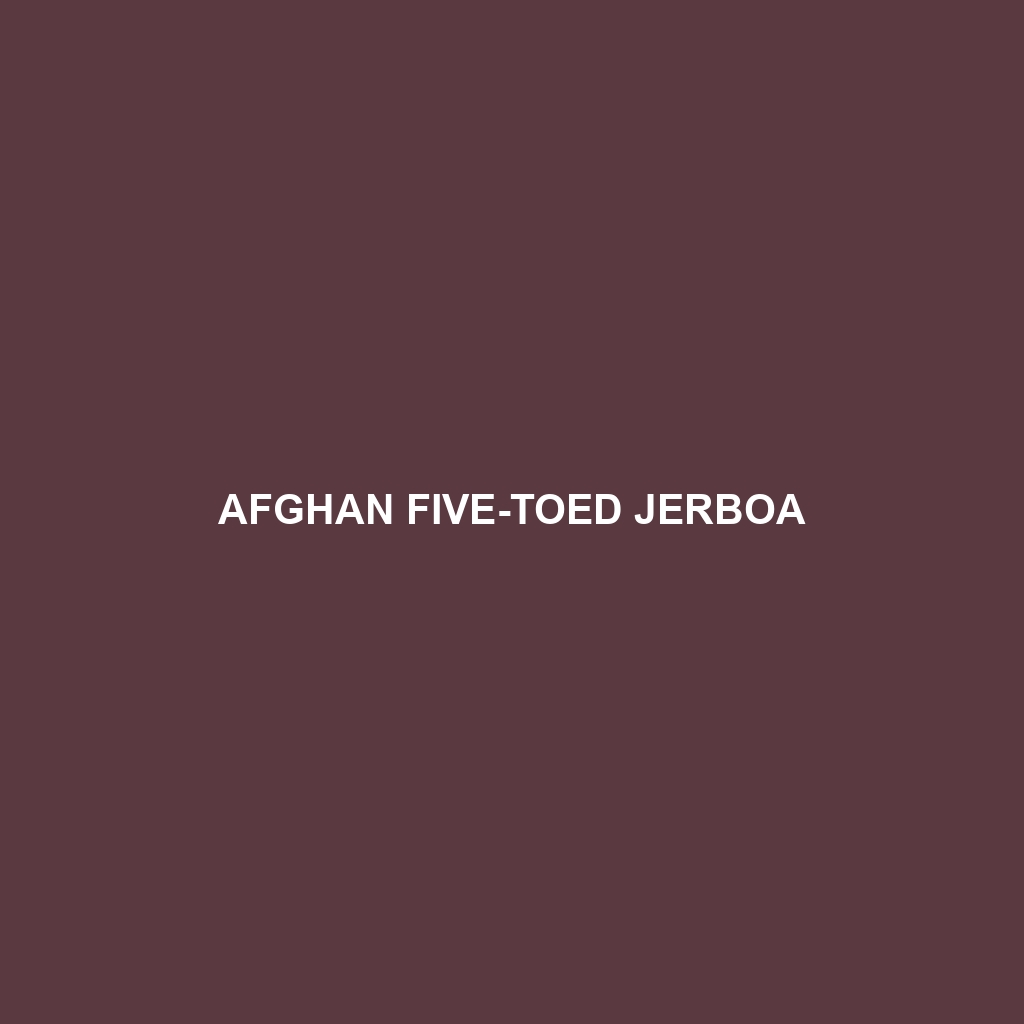Afghan Five-toed Jerboa
Common Name: Afghan Five-toed Jerboa
Scientific Name: Allactaga firuge
Habitat
The Afghan Five-toed Jerboa is primarily found in the arid environments of Afghanistan, particularly in desert regions and semi-deserts. It thrives in sandy soils and areas with sparse vegetation, which provide essential cover and food sources. This species is also seen in neighboring parts of Central Asia, adapting well to the harsh climatic conditions of these regions.
Physical Characteristics
Afghan Five-toed Jerboas are small rodents, typically measuring about 10 to 15 centimeters in body length, with a longer tail that can exceed their body length by an additional 10 to 20 centimeters. They have large hind legs, which are adapted for jumping, and their feet exhibit five toes, a distinctive feature that sets them apart from other jerboa species. Their fur is typically a pale sandy color, aiding in camouflage against the desert landscape, and they have large, prominent ears that assist in thermoregulation.
Behavior
This species is primarily nocturnal, excavating complex burrow systems to reside in during the day. The Afghan Five-toed Jerboa exhibits fascinating behaviors, including remarkable agility and speed, allowing it to evade predators efficiently. They are known to hop quickly across the sand, using their enlarged hind limbs, and they can make impressive leaps of up to 3 meters. Socially, they are relatively solitary, although they may share burrows with other jerboas.
Diet
The diet of the Afghan Five-toed Jerboa consists mainly of seeds, plant material, and occasionally insects. This herbivorous diet allows them to thrive in their nutrient-scarce habitat. They feed mainly at night, when temperatures are cooler, and have been observed hoarding food in their burrows to sustain them during lean times.
Reproduction
Breeding typically occurs in early spring, with the Afghan Five-toed Jerboa exhibiting a breeding season that extends through late summer. Females usually give birth to a litter of 2 to 5 offspring after a gestation period of about 30-35 days. The young are born blind and helpless but begin to develop quickly, becoming independent after several weeks.
Conservation Status
The current conservation status of the Afghan Five-toed Jerboa is classified as vulnerable due to habitat loss and degradation, primarily driven by agricultural expansion and climate change. Protection of their natural habitats is essential for the survival of this unique rodent species.
Interesting Facts
The Afghan Five-toed Jerboa is known for its unique locomotion, which resembles that of kangaroos, allowing it to cover large distances in search of food. Furthermore, they have an extraordinary ability to survive without direct water intake, deriving moisture solely from the food they consume.
Role in Ecosystem
In the ecosystem, the Afghan Five-toed Jerboa plays a crucial role as a seed disperser, contributing to the propagation of desert flora. Their burrowing activity also helps aerate the soil, facilitating water absorption and promoting plant growth. Additionally, they serve as prey for various predators, forming an integral part of the food chain in their habitat.
